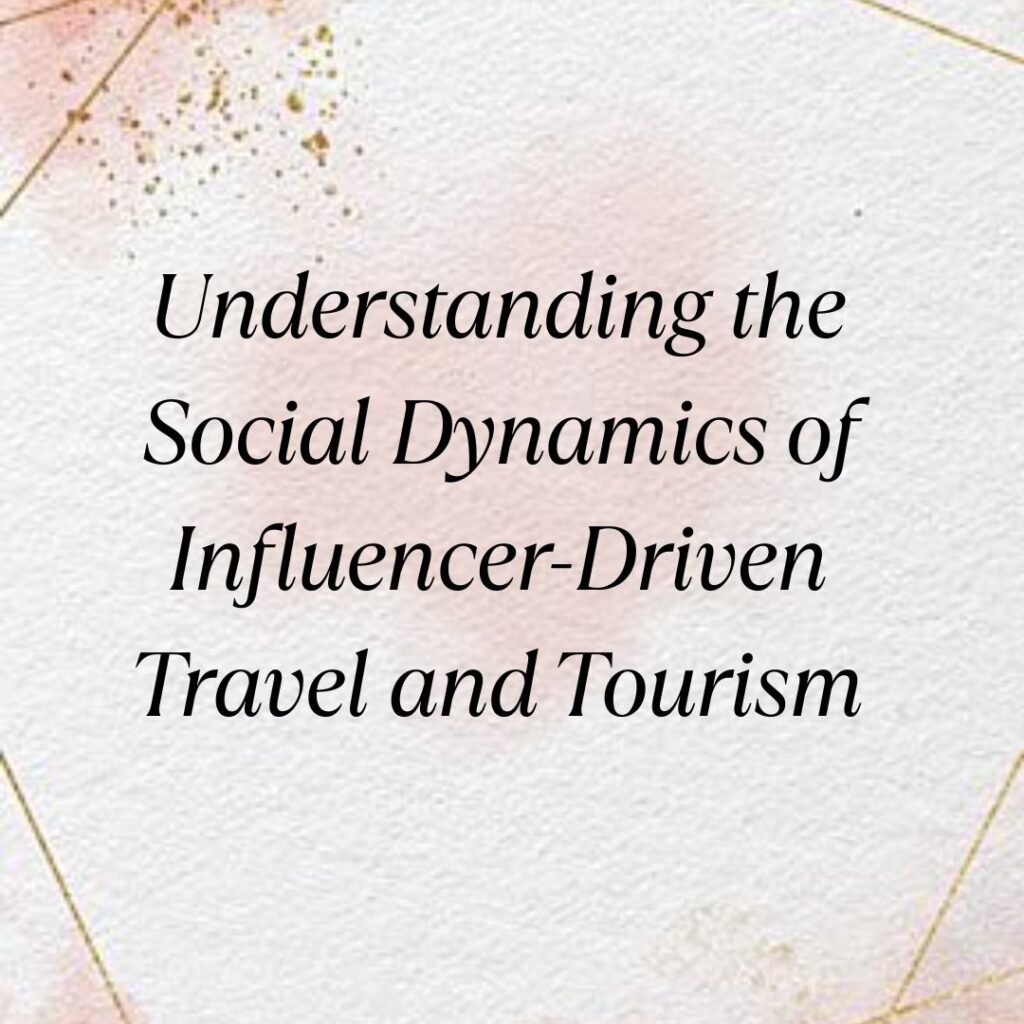In recent years, the landscape of travel and tourism has undergone a profound transformation, largely influenced by the rise of social media and the phenomenon of influencers. These digital trendsetters have become pivotal in shaping not just consumer trends but entire industries, including how people plan, experience, and share their travel adventures. In this article, we delve deep into the social dynamics behind influencer-driven travel and tourism, exploring its impact, challenges, and what it means for the future of travel.
The Rise of Influencer Culture in Travel
Influencers, often individuals with a significant online following on platforms like Instagram, YouTube, and TikTok, wield immense power in today’s digital age. They are more than just content creators; they are trendsetters and trusted sources of inspiration for their audiences. When it comes to travel, influencers offer more than just picturesque snapshots of destinations—they curate experiences, provide recommendations, and create narratives that resonate deeply with their followers.
Take, for example, the case of travel influencer Jack Morris, known for his Instagram handle @doyoutravel. Morris gained fame by sharing stunning photos of exotic locations around the world. His visually appealing content not only garnered millions of followers but also influenced travel decisions globally. From secluded beaches in Bali to the bustling streets of Tokyo, influencers like Morris have the ability to turn obscure destinations into must-visit hotspots overnight.
Impact on Travel Behavior and Industry Trends
The influence of travel influencers extends beyond mere inspiration; it directly impacts consumer behavior and industry trends. According to a survey by Booking.com, over 40% of travelers globally are influenced by social media when choosing their next travel destination. This statistic underscores the significant role influencers play in shaping travel decisions and preferences.
Moreover, influencer collaborations with hotels, airlines, and tourism boards have become commonplace. These partnerships not only enhance brand visibility but also cater to the growing demand for personalized, authentic travel experiences. For instance, luxury hotels often invite influencers for exclusive stays, allowing them to showcase the property to their followers in exchange for exposure—a symbiotic relationship that benefits both parties.
Challenges and Ethical Considerations
However, the rise of influencer-driven travel is not without its challenges. One of the primary concerns is authenticity. With sponsored content and paid partnerships, there is a risk that influencers may prioritize commercial interests over genuine recommendations. This blurring of lines between advertising and authenticity raises ethical questions about transparency and trustworthiness in influencer marketing.
Additionally, the phenomenon of “overtourism” has been exacerbated by influencer endorsements. Popular destinations featured prominently on social media often experience a surge in tourist footfall, leading to environmental degradation, strain on local infrastructure, and conflicts with residents. Balancing the promotion of travel destinations with sustainable tourism practices remains a critical issue that influencers and industry stakeholders must address collaboratively.
The Future of Influencer-Driven Travel
Looking ahead, the future of influencer-driven travel promises continued evolution and innovation. As social media platforms evolve and new technologies emerge, influencers will likely adopt more immersive content formats such as virtual reality (VR) and augmented reality (AR) to engage their audiences. These advancements will not only enhance the storytelling aspect of travel content but also provide more interactive and personalized experiences for viewers.
Moreover, the role of micro-influencers—individuals with smaller but highly engaged followings—will become increasingly significant. Micro-influencers often specialize in niche interests or specific geographic regions, making their recommendations more targeted and authentic. This shift towards micro-influencers reflects a growing preference among consumers for genuine, relatable content that resonates on a personal level.
In conclusion, influencer-driven travel and tourism have redefined how people explore the world and make travel decisions. By leveraging their digital platforms, influencers have democratized travel inspiration and transformed it into a social experience. However, with great influence comes great responsibility. As the industry continues to evolve, maintaining transparency, promoting sustainability, and fostering authentic connections will be key to ensuring a positive and enduring impact on both travelers and destinations alike.
In essence, influencer-driven travel is not just about beautiful photos and dreamy destinations—it’s about the stories we share, the connections we make, and the cultural exchange that enriches our understanding of the world.







